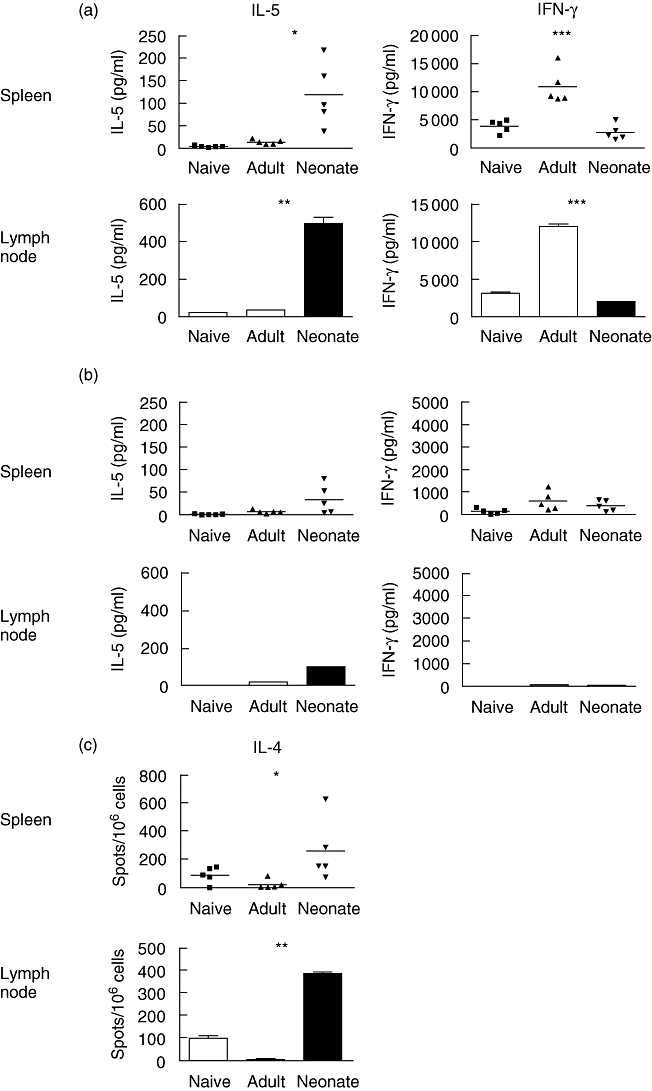Fig. 4.

High-level interleukin (IL)-5 production is evident only in neonatally primed lymph node and spleen following respiratory syncytial virus (RSV) infection during adult life. Mice primed as adults or neonates were rechallenged with RSV during adult life 7 weeks post-priming. Mice previously naive were challenged once with RSV. Spleens and lymph node were harvested 7 days after secondary challenge (or primary challenge for the naive group). Spleen or lymph node cells were then restimulated in culture with RSV-infected syngeneic, irradiated splenocytes (a) or with medium alone (b) for 72 h. The IL-5 and interferon-γ content of cell culture supernatants (pg/ml) was assessed. IL-4 secreting cells were detected by enzyme-linked immunospot assay (ELISPOT) and expressed as spots/106 cells (c). Results for individual mice are shown for spleen cell cultures, and for pooled lymph node cultures (from at least four mice per group) and each bar represents the average ± standard deviation values from triplicate enzyme-linked immunosorbent assay wells. Differences between adult- and neonatally primed groups are shown; *P < 0·05 and **P < 0·01 and ***P < 0·001 by Student's t-test. The data shown are representative of two independent experiments.
